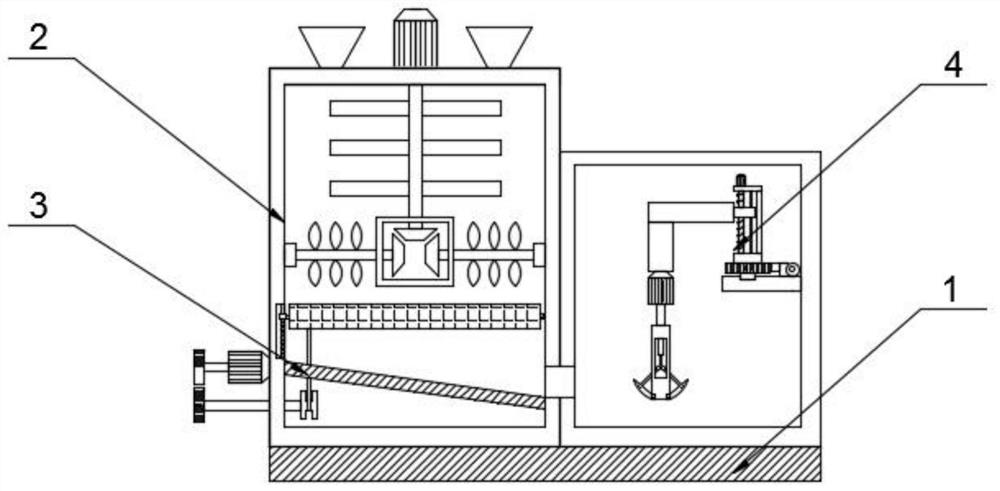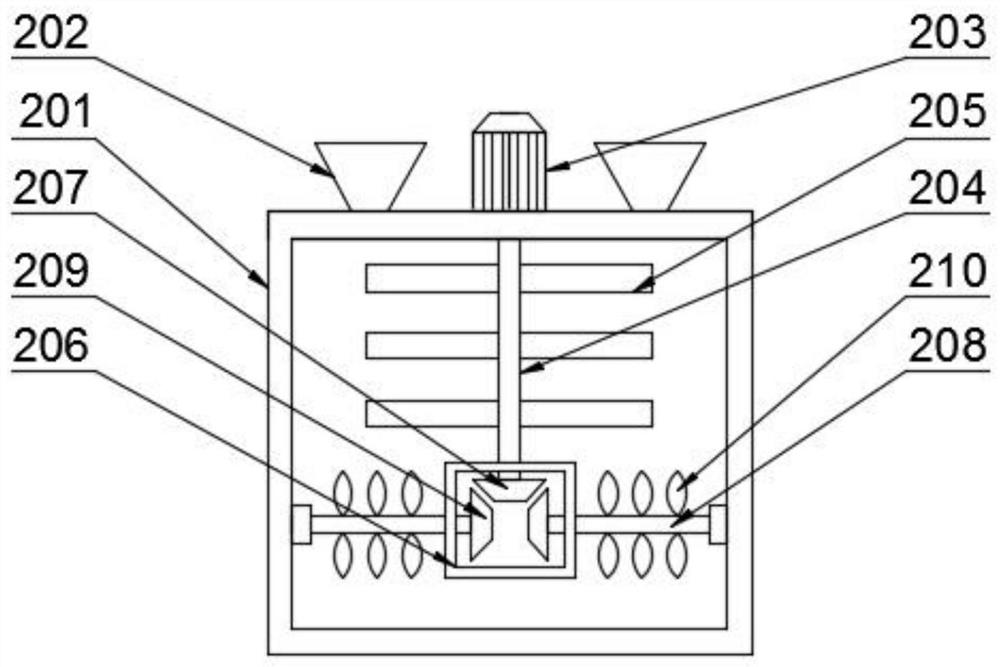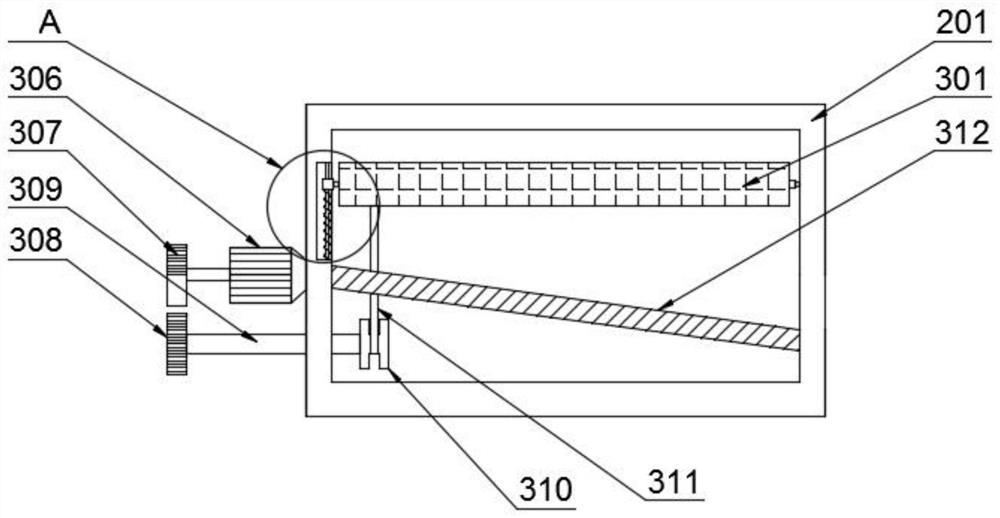Thermal insulation plastic and production process thereof
A heat insulation and plastic technology, applied in the field of plastic production, can solve the problems of lack of screening mechanism, dead angle, and inability to fully crush materials, etc., and achieve the effect of improving screening efficiency, improving efficiency, and improving crushing efficiency
- Summary
- Abstract
- Description
- Claims
- Application Information
AI Technical Summary
Problems solved by technology
Method used
Image
Examples
Embodiment 1
[0049] A thermal insulation plastic, comprising the following raw materials in parts by weight: 50 parts of cellulose, 8 parts of polyethylene, 1 part of polymethylphenol aldehyde, 1 part of quartz, 12 parts of polysiloxane, 12 parts of polyesterimide, mineral 7 parts of oil, 7 parts of polyethylene, 7 parts of ethylene glycol and 3 parts of high temperature resistant matrix;
[0050] The thermal insulation plastic is made by the following steps:
[0051] The first step, stirring and mixing cellulose, polyethylene, polymethylphenol aldehyde, quartz, polysiloxane, polyesterimide and mineral oil to obtain a mixture;
[0052] The second step is to put the mixture into a crushing and grinding device for grinding for 12 minutes, add polyethylene to react for 5 minutes, add ethylene glycol to react for 14 minutes, and obtain a reactant;
[0053] The third step is to evaporate the reactant, dry the evaporated reactant at 60°C for 2 hours, put the reactant into a mixer at 70°C, and s...
Embodiment 2
[0058] A thermal insulation plastic, comprising the following raw materials in parts by weight: 55 parts of cellulose, 12 parts of polyethylene, 3 parts of polymethylphenol aldehyde, 3 parts of quartz, 13 parts of polysiloxane, 13 parts of polyesterimide, mineral 10 parts of oil, 10 parts of polyethylene, 8 parts of ethylene glycol and 4 parts of high temperature resistant matrix;
[0059] The thermal insulation plastic is made by the following steps:
[0060] The first step, stirring and mixing cellulose, polyethylene, polymethylphenol aldehyde, quartz, polysiloxane, polyesterimide and mineral oil to obtain a mixture;
[0061] The second step is to put the mixture into a crushing and grinding device for grinding for 13 minutes, add polyethylene to react for 7 minutes, add ethylene glycol to react for 15 minutes, and obtain a reactant;
[0062] The third step is to evaporate the reactant, dry the evaporated reactant at 65°C for 2 hours, put the reactant into a mixer at 75°C, ...
Embodiment 3
[0067] A thermal insulation plastic, comprising the following raw materials in parts by weight: 65 parts of cellulose, 15 parts of polyethylene, 5 parts of polymethylphenol aldehyde, 5 parts of quartz, 15 parts of polysiloxane, 15 parts of polyesterimide, mineral 12 parts of oil, 12 parts of polyethylene, 10 parts of ethylene glycol and 5 parts of high temperature resistant matrix;
[0068] The thermal insulation plastic is made by the following steps:
[0069] The first step, stirring and mixing cellulose, polyethylene, polymethylphenol aldehyde, quartz, polysiloxane, polyesterimide and mineral oil to obtain a mixture;
[0070] The second step is to put the mixture into a crushing and grinding device for grinding for 15 minutes, add polyethylene to react for 10 minutes, add ethylene glycol to react for 17 minutes, and obtain a reactant;
[0071] The third step is to evaporate the reactant, dry the evaporated reactant at 70°C for 2.5 hours, put the reactant into a mixer at 80...
PUM
 Login to View More
Login to View More Abstract
Description
Claims
Application Information
 Login to View More
Login to View More - R&D
- Intellectual Property
- Life Sciences
- Materials
- Tech Scout
- Unparalleled Data Quality
- Higher Quality Content
- 60% Fewer Hallucinations
Browse by: Latest US Patents, China's latest patents, Technical Efficacy Thesaurus, Application Domain, Technology Topic, Popular Technical Reports.
© 2025 PatSnap. All rights reserved.Legal|Privacy policy|Modern Slavery Act Transparency Statement|Sitemap|About US| Contact US: help@patsnap.com



